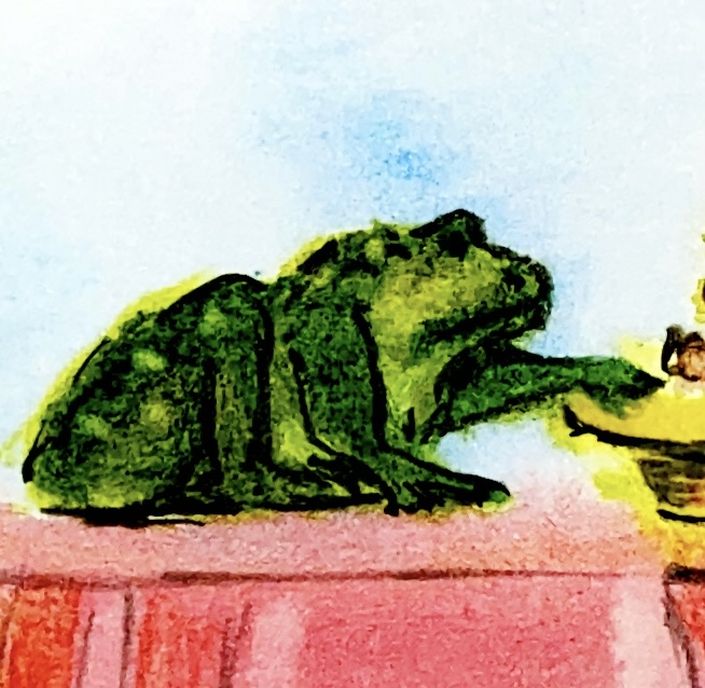Bundle Contents
Get all four as a bundle and save!
First Grade Storytelling
Course Overview
This course is designed to help you improve your storytelling skills. We will take each lesson to look at simple skills that enhance the entire experience of storytelling, for the storyteller and for the listeners. We will look at classic and archetypal gestures, the overall mood appropriate for the audience you have, how to use the five physical senses to engage the full imagination of the audience, and how to appeal to the four classic temperaments. While the primary focus of this course is in relation to storytelling for First Grade Waldorf Education, the skills introduced and practiced in this course are universally applicable to any storytelling setting.
This course includes thirty-six stories from the fairytale and folktale traditions of many cultures in the world. As such, they are only examples of what can be done. You will be able to learn the skills we cover and apply them to any stories you choose to tell your student(s) or any other audience.
First Grade Drawing & Language Arts
Course Overview
In Waldorf Education, we strive to bring every lesson in a meaningful context. With language, this means that we can derive our language lessons out of stories and other imaginative sources that are already familiar to the child. From the images that have lived in the child's imagination, we draw artistic pictures and then find symbols from within those pictures. From the symbols, we find that the letters we use today have evolved. Of course, this is not meant to re-create the actual historical process for how the modern English alphabet evolved. Instead, the student experiences a process that is more immediately connected to the stories they heard and imagined. The result is that they feel more connected to these words and letters, when otherwise such symbology could feel random and abstract.
This course, of thirty-six total lessons, will present examples of how we create the pictures, words, and consonant letters from 21 different stories. The rest of the course brings in the practice of writing and reading--yes, in that order for some children. While it is completely possible to copy these lessons for your student(s), it is just as feasible to use these as examples that empower you to create your own lessons in the same ways. So you will have that option for yourself with every lesson. As you observe how much challenge your child needs, the creation of lessons that are more or less advanced may become something you choose to do.
Because the lesson-building process involves the creation of artwork, these video lessons will guide you through the process of creating the drawings. At the same time, this course is not meant to be an introductory art course. That being said, we are working with first-grade level drawings. So if you are new to visual artwork, this is a great course to help you gain confidence and skill. It is also important to remember that many students will surpass us anyway. When they are brought to artwork early in life, they have a much easier time later on developing to great heights. It is certainly important that we give them some foundational skills. However, the most important thing we can give the young student is the example of someone who is willing to strive and who does not engage in the detrimental self-critique. We give it our best efforts and move forward. We will definitely see things that we want to improve and we strive to do that in the future. We do not waste any time or energy degrading ourselves for some lack of perfection. When the teacher can embody this everyday--and sometimes it means we have to be able to laugh at ourselves in a healthy way--then we give the young student one of the most important gifts imaginable.
The story sources used in this course correspond to the stories presented in the First Grade Storytelling Course. This does not require that you take that course. If you do not, and if you are not familiar with the stories used, you may want to read the stories so that you can understand how the lesson is being derived from the story. Understanding how this works will help you feel more empowered to do the same thing on your own.
First Grade Math
Course Overview
In Waldorf Education, we strive to bring our lessons out of stories and other imaginative sources. In these thirty-six lessons we will derive math activities and written work from the stories that are presented in the First Grade Storytelling Course. Unlike the Language Arts Course, the Math Course does not utilize the artwork as much. Instead this course will demonstrate over and over the ways that we can bring mathematical activities for the students to practice working with math patterns in ways that are connected to the stories they have heard and imagined. That connection of the activities and the written work to something they have lived into gives the lessons more meaning and more enjoyability.
The ability to count forward and backward by 2's, 3's, 4's, 5's, 10's, and 11's are very important skills to master in first grade. We will work with such patterns in all of the processes: addition, subtraction, multiplication, and division. As we do this, we learn to see the same patterns according to the view of certain characters. We will meet Prince Plus, Minister Minus, the Magician of Division, and Timothy Times. These characters give the child an imaginative access to seeing patterns differently. At the same time, the students learn to express these patterns differently as well. Each character sees and expresses things in different ways. With repeated examples of this, the students become more familiar with each process and they learn how the processes relate to one another.
So, along with these lessons, you will receive some math tips and tricks specific to first grade so that you will have things to help with the practice of skills outside of main lessons.
Important Note: A wise old Waldorf teacher once said that all subjects can be allowed to "go to sleep" for a while--all except math. Other subjects can sleep for a few weeks and then re-awaken. However, math does not re-awaken. If it "goes to sleep", then math dies. I have to admit that my teaching years have verified this statement. What does that mean on the most practical level? We must practice math everyday. It does not get the weekend off. It does not go on summer vacation. This message is included to emphasize just how important the addition of tricks and tips will be for you and your student(s). The thirty-six lessons included in this course are for main lessons. However, there is much more to do in order to develop the habits, the memorization, and the skills that need to be mastered by the end of first grade. If you develop a daily habit of twenty minutes of practice, this will be every bit as valuable to them as anything learned in the main lessons.
You will see, as you work through the lessons, that there are times that a couple of lessons are derived from one story, rather than each lesson corresponding to each story presented in the First Grade Storytelling course. As you will hear it presented, sometimes the teacher must consider the benefits of returning to a story for another lesson because the number work fits so well and weigh those benefits against the benefits of moving on to a new story. This only happens a handful of times in this course. For the most part, each lesson is derived from a new story. Still, it is important to see that there is some flexibility for the teacher to find lessons.
First Grade Math Tips and Tricks
This tips and tricks course is created to augment the course titled "First Grade Math". First Grade math is a main lesson course that provides you with example lessons for introducing concepts and patterns, as well as a bit of practice work. This tips and tricks course complements the main lesson work with more of the daily practice outside that really helps students practice those things that have already been introduced.
In this course, you will find some example songs for learning number patterns. Tips about how to create and use flash cards for the addition and subtraction math facts as well as the multiplication and division tables. There is a lesson about creating and using cards that work with patterns and number groupings. There are examples of how to play games with numbered playing cards, dice, and dominoes that help strengthen the student's math skills in playful ways. There are also tips about how to begin the journey of mental math work (yes, even in first grade). Taken altogether, these tips and tricks give the teacher a nice set of activities to use on a daily basis. The teacher will also have the freedom to develop more activities and games from this foundation.

Hi, I’m Rev Bowen
“Rev Bowen, M.A. (Human Development)
After graduating with a BA in English (1996), Rev completed his Waldorf Grades Teacher training at the Rudolf Steiner College in 2000. He taught as a grades teacher for 18 years, taking two classes from first to eighth grades and one class for seventh and eighth grades. During those early teaching years, he completed his M.A. in Human Development through St. Mary’s University (2004). From 2018 - 2020, Rev served as the Pedagogical Director of the school’s College of Teachers and then spent the 2020-2021 school year as the School Administrator. He currently continues to teach several subject classes while developing courses for Simply Waldorf.
Along with having taught all of the main lesson courses in grades one through eight, Rev has taught many subject classes such as: handwork, woodwork, sculpting and modeling, painting, drawing, form drawing, perspective drawing, recorder and flute, hand bells, percussion, choir, drama, and games and movement.
During the last 22 years, Rev has been a keynote speaker, presenter, and teacher for various conferences and trainings, with these events being offered to Waldorf teachers, charter school teachers, public school teachers, and parent-educators. He has observed, evaluated, and mentored many teachers during that time as well.
While Rev has never taught a homeschool curriculum to students, he has been involved in consultations and conversations with homeschooling families for the last few years and he has designed other courses, prior to Simply Waldorf, for homeschooling parent-educators. Another interesting note is that Rev had one of his children in his elementary class for eight years, which has helped him to relate to parent-educators who discover the rewards and challenges that come with trying to balance the roles of parent and teacher for the same child or children.
It was during the recent years, while developing the homeschooling resource courses, that Rev realized how important and needed such courses were for those families who courageously choose to homeschool their children. Those conversations and experiences serve as the inspiration for creating Simply Waldorf and more resource courses for parent-educators.”





